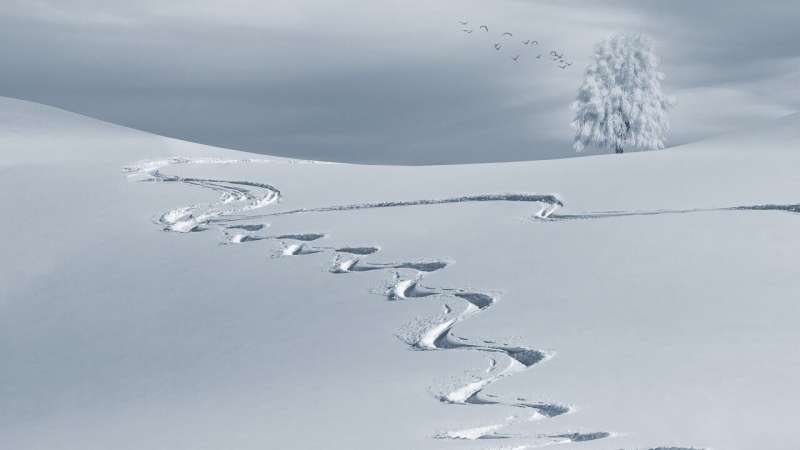Don't expect Colorado to have a good snow year. Here's why

Colorado can expect a warmer and drier winter, putting the state at greater risk of wildfire and lessening the chance of rebounding from the ongoing megadrought plaguing the West, climate scientists say.
To blame, they say, are La Niña conditions striking for the third year in a row.
Only twice before have La Niñas struck for three straight years, according to Becky Bollinger, of the Colorado State University's Colorado Climate Center.
Historically speaking La Niñas split the state in half, Bollinger said. The northern portion can expect an average or above-average snowy season while the southern section will likely be warmer and drier.
To understand why, you have to understand a few basics about El Niño-Southern Oscillation weather patterns.
La Niñas and their brothers, El Niños, begin in the Pacific Ocean waters off South America's west coast.
When the ocean waters are colder than normal, cold air from the area heads to North America and pushes the Pacific Jet Stream further north, Tom DiLiberto, a climate scientist with the National Oceanic and Atmospheric Administration, said.
Think of the jetstream as a sort of "storm highway" that crosses North America from west to east, DiLiberto said. So when cold winds push the entire highway further north, the storms that bring rain and snow move with it.
Typically that means more winter rain and snow for the Pacific Northwest and the northern portions of the Rocky Mountains, DiLiberto said. The American Southwest tends to be warmer and drier for the winter.
"If you were hoping for there to be a good winter precipitation season across these drought areas… you would not want to have a La Niña in the forecast," DiLiberto said.
Colorado sits between the two extremes, DiLiberto said. So it can see a bit of both.
El Niños are the opposite, he said. Warm water off the Pacific coast of South America heads north and pulls the jetstream further south, typically bringing more rain and snow to Colorado.
Neither weather pattern is a guarantee of a certain type of winter, DiLiberto said. But they're one way climatologists can—fairly accurately—divine some general details about the winter to come.
Because Colorado straddles the line, conditions brought by La Niñas and El Niños aren't always quite as pronounced as they might be further north or south, Russ Schumacher, who heads the Colorado Climate Center.
But since this is the third La Niña to hit in a row, the conditions could be compounded.
"There's quite a strong signal in La Niña falls for the Eastern Plains and the Front Range to be dry," Schumacher said. "We saw that play out last fall, which was very extreme, and we're seeing that so far this fall."
These warm and dry conditions serve to exacerbate wildfire danger across the state, especially as emergency officials repeatedly warn of a year-round wildfire season.
Colorado saw enough rain to avoid the worst of summer wildfires, Schumacher said, but dry and warm fall days bake leaves and foliage. That tinder is easier to ignite and the fall's typically windy conditions can feed those flames, causing them to spread quickly out of control.
That risk can easily extend into the winter months now, as the state saw last December with the Marshall Fire, the most destructive in Colorado's history.
Schumacher noted the Sweetwater Fire, which sparked Sunday south of Colorado Springs, was made worse by strong winds. In all, the fire scorched nearly 350 acres before emergency responders could contain it.
While some mountain areas are already seeing traces of snow—perhaps even up to a foot—the wildfire risk remains, especially on the Eastern Plains, Front Range and in the southwest corner of the state, Bollinger said.
That wildfire risk will persist until enough snow falls to quench the parched foliage and soils, however briefly, Bollinger said.
Whatever snow does fall this winter is unlikely to put a substantial dent in the decades-long megadrought choking the American West from the water it desperately needs, Bollinger said. Soils, rivers and reservoirs are far too dry for a single winter to fix, especially winter that'll likely only bring below-average snowfall.
"It would require more than one way above average snow year to really start putting a dent in those deficits," Bollinger said.
2022 MediaNews Group, Inc.
Distributed by Tribune Content Agency, LLC.




















